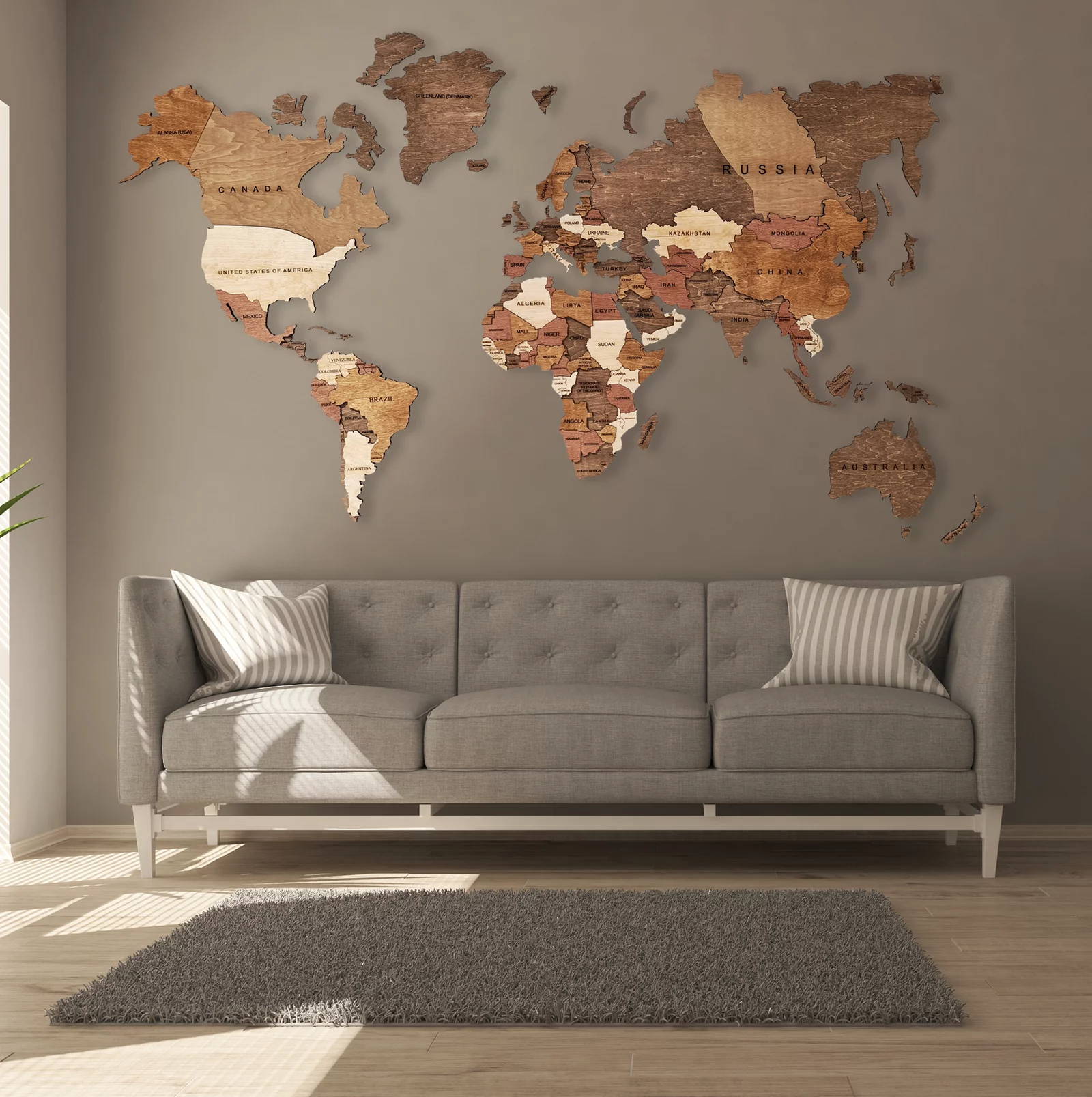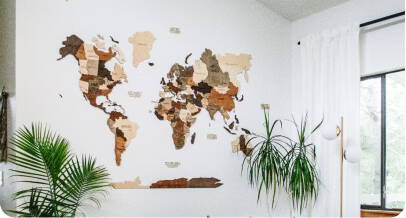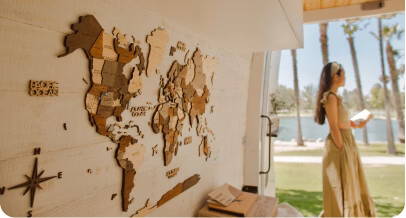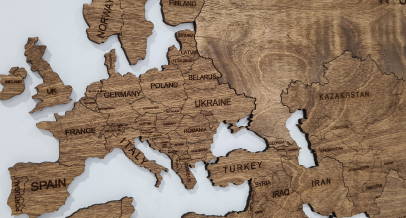Isabella J.
The world tree map is both elegant and informative. It's a top-quality product that enhances the ambiance of my home.
Noah R.
I can't believe how well this tree map complements my interior. It's a versatile piece of art that enhances the look of any room
Liam C.
I'm a fan of high-quality décor, and this world tree map exceeded my expectations. It's beautiful and blends perfectly with my home's aesthetics.
Abigail R.
The tree map adds a touch of sophistication to my interior. The craftsmanship is superb, and I couldn't be happier with my purchase.
Mason C.
This tree map is not just a decoration; it's a work of art. It's so versatile that I can place it in any room, and it looks amazing.
Emily M.
The quality of this world tree map is outstanding. It's a statement piece that fits seamlessly into my home's décor.
Jackson P.
I receive compliments from every guest who sees this world tree map on my wall. It's both stylish and educational, and it suits any room.
Sophia B.
The tree map is a piece of art that adds a global perspective to my space. The quality is top-notch, and it complements any interior.
Samuel T.
I can't get enough of my world tree map! It's a high-quality piece that gives character to my room and sparks my wanderlust.
Ava P.
I was pleasantly surprised by the quality of this world tree map. It looks fantastic on my wall and has become a focal point of my home
Benjamin H.
This tree map is the perfect blend of art and geography. It's stunning, well-crafted, and fits seamlessly into any room.
Olivia M.
The world tree map is not just a decoration; it's a conversation starter! It fits perfectly with the interior design and is of the highest quality.
Ethan A.
I'm absolutely in love with the world tree map on my wall! The quality is exceptional, and it adds a touch of elegance to my living room.
Sam D.
Speedy delivery. In time for Christmas
Sarah T.
Lovely world map easy instructions.
Guylaine L.
Super quality, matches the description. Delighted with the rendering and finish
Canelle J.
very pretty, as described, great
Marco S.
Everything wonderful: super fast delivery, really good and high quality product
Julija S.
Exactly what I was looking for. Good quality, fast delivery and good communication. Thanks
Tina P.
Very happy, map looks amazing. Thank you
Craig S.
Just as pictured. Should probably come with a warning not to put it up with your other half. Potential for causing divorce!! I absolutely love it, though, and it was worth the arguments.
Melanie P.
The map is absolutely gorgeous. I am so pleased with it.
Mila B.
Amazing quality of the map and great customer service! Super fast shipping to California too!
Morgane S.
Very beautiful and perfectly matches the descriptions and photos! Too bad there's nothing to stick to the wall
Slaven K.
Well done, looks amazing on my wall, high quality. Excellent customer service also!
T S.
This map is exactly what we wanted. Dominykas was a pleasure to work with, quick to respond and it arrived earlier than expected. It came with clear instructions and a template that made it easy to hang.
S.M.
I wanted to salute the seriousness and professionalism of the seller, I got the wrong card and after returning the card to him he very quickly returned a card to his charge. The map is superb and of very good quality, there are landmarks to be able to make the right locations of the countries. I recommend ++
J.B.
I'm very happy with the quality and the outcome! It looks amazing and was very easy to put together. Also contact with the seller was super fast and easy, thank you for this beautiful product :)
K.S.
The package arrived much faster than expected and was very well packed. We are totally enthusiastic about the world map, even "smaller" islands are there and the laser engraving is super accurate and legible even on the very small pieces. In addition, there is a great guide so that the distances of the map are right. In advance, I asked the seller what size he recommends because we use an old table top as a background. The answer came lightning fast and very friendly. I would order again anytime!














